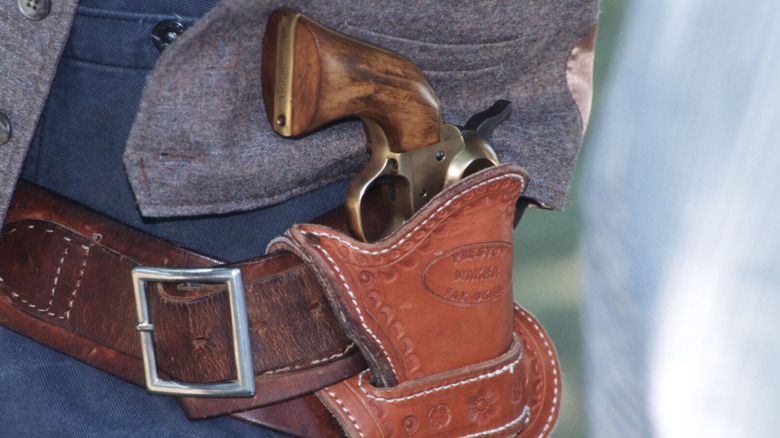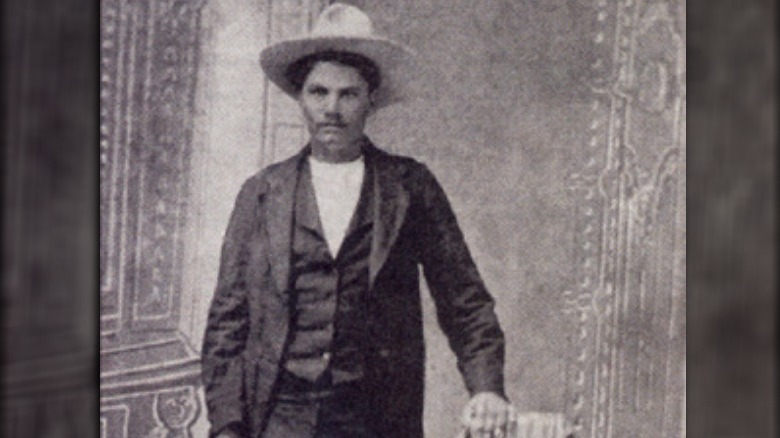The Truth About John Wesley Hardin's Death
The bloodshed and savagery of the Old West makes it ripe for colorful depictions in films, television shows, and books. Although these fictionalized displays are undoubtedly exaggerated at times, the vicious nature of the time period was surprisingly not far off from its more gruesome portrayals in popular media.
John Wesley Hardin was an Old West outlaw in the truest sense of the word, and a perfect encapsulation of the savagery of this era. After witnessing a murder at eight years old and taking his first life at just 15, Hardin, who History called "one of the bloodiest killers" of his time — the Texas State Historical Association says he killed as many as 30 men — would spend much of his life on the run.
The running ended with his arrest by Texas Rangers in Pensacola, Florida, in 1877. Hardin was convicted of murder and sentenced to 25 years in prison. Between escape attempts, Hardin, son of a preacher, read theology and studied law. After he was pardoned in 1894 he moved to El Paso, Texas, to establish a law practice.
There are conflicting accounts of Hardin's death
Historical record of the end of Hardin's life is conflicting. Everyone agrees that Hardin (above) was gambling, shooting dice in El Paso's Acme Saloon on August 19, 1895. The record also shows that Hardin was shot in the head by El Paso constable John Selman. Although traditional knowledge accepts that Hardin was shot in the back of the head, True West Magazine noted that Hardin biographers Chuck Parsons and Norman Wayne Brown have highlighted eyewitness accounts suggesting Hardin spotted Selman in the saloon and went for his gun. The pair also examined the death photo, pointing out a wound near Hardin's left eye that they believe resembles an entrance wound, which would make the wound on the back of his head an exit wound, where the bullet left his skull.
Just as the facts of the event vary, the reason for Hardin's death is not set in stone. According to History, Hardin was killed after he threatened Selman for arresting his girlfriend for carrying a gun in the city. Britannica claims that it was this threat that sealed the fate of the outlaw-turned-attorney.
Famous Texans advances yet another theory motivating Hardin's shooting: that Hardin was killed over his role in a love affair. That source relates that Hardin hired law enforcement to kill the husband of his paramour, but was ultimately killed himself by Constable Selman, one of the supposed hitmen. The Texas State Historical Association suggests it was because Hardin stiffed Selman on payment.

